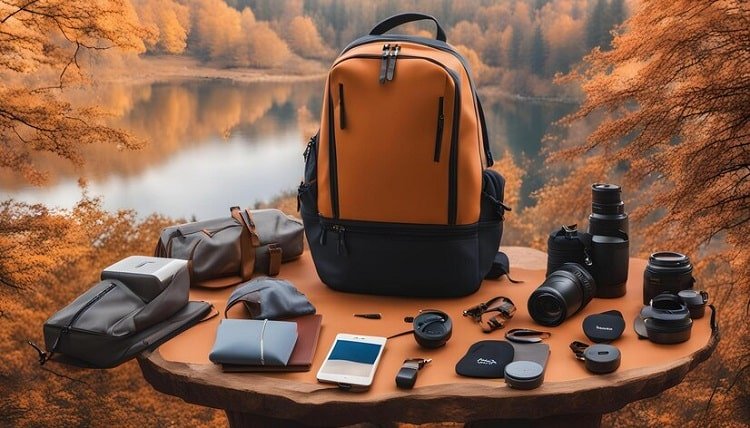
Over-tourism has become a growing concern in recent years, with popular destinations struggling to accommodate the influx of visitors during peak seasons. However, there is a solution that not only alleviates the strain on these hotspots but also offers travelers a unique and enriching experience: off-season travel. By exploring the world during the less crowded periods, you can unlock a world of advantages, from cost savings and fewer crowds to authentic cultural experiences and better photo opportunities.
Key Takeaways
- Off-season travel can lead to significant cost savings on flights, accommodations, and attractions.
- Fewer crowds mean a more peaceful and relaxing environment, allowing you to truly immerse yourself in your surroundings.
- Authentic cultural experiences are more accessible during off-season, as local traditions and interactions are less influenced by tourism.
- Photography enthusiasts can capture breathtaking shots without the distractions of large crowds.
- Off-season travel promotes sustainable tourism practices by reducing the negative impacts of over-tourism.
Imagine waking up in a picturesque destination, free from the chaos of peak tourist season. The streets are quieter, the queues are shorter, and the air is fresher. This is the beauty of off-season travel, a hidden gem that more and more travelers are discovering.
While the allure of peak season travel is undeniable, with its buzz of activity and abundance of events, there’s something truly special about experiencing a destination during its slower periods. It’s a chance to step off the beaten path and immerse yourself in the authentic heart of a place, without the distractions of crowds and chaos.
In this article, we’ll explore the numerous advantages of off-season travel, from cost savings and fewer crowds to authentic cultural experiences and better photo opportunities. So, grab your sense of adventure, and let’s dive into the world of off-season exploration!
Cost Savings
- One of the best reasons to travel during the off-season is the potential for significant cost savings.
- Flight prices tend to be lower during off-peak periods, as airlines try to fill seats and generate revenue.
- Similarly, hotels and vacation rentals often offer discounted rates to attract guests during slower seasons.
For example, a recent study found that travelers could save up to 40% on airfare and accommodations by visiting popular European destinations like Paris, Rome, and Barcelona during the spring or fall shoulder seasons, compared to the peak summer months.
But the savings don’t stop there. 1. Many tourist attractions, museums, and restaurants also offer reduced admission fees or special deals during off-peak times.
Looking for inspiration? Consider visiting Europe’s Christmas markets in November and December, when you can soak in the festive atmosphere without the summer crowds (and prices!).
Tips for Finding the Best Off-Season Deals:
- Be flexible with your travel dates and destinations.
- Sign up for price alerts and follow travel deal websites.
- Consider package deals that bundle flights, hotels, and activities.
- Look for destinations with year-round appeal, like beach towns or ski resorts.
Fewer Crowds
While cost savings are a major draw, one of the best things about off-season travel is the opportunity to avoid the crowds. Popular tourist hotspots can feel like sardine cans during peak season, with long queues, crowded attractions, and a general sense of chaos.
- By visiting during the off-season, you’ll enjoy a more peaceful and relaxing environment.
- Shorter lines mean you can breeze through museums, galleries, and other attractions without the frustration of endless waiting.
- Fewer people also means less noise pollution and a more authentic sense of place.
Imagine strolling through the quiet streets of Venice without the summer throngs or taking in the breathtaking vistas of Machu Picchu without the distraction of large tour groups. These are the kinds of experiences that make off-season travel truly special.
Examples of Destinations That Are Less Crowded During Off-Season:
- Machu Picchu (Peru): May and September
- Venice (Italy): November to February
- Kyoto (Japan): March to May, September to November
- Bali (Indonesia): October to April
- Yellowstone National Park (USA): April, May, September, October
By avoiding the peak tourist season, you’ll be able to fully immerse yourself in the beauty and tranquility of these destinations, without the chaos of high season.
Authentic Experiences
One of the most compelling reasons to travel during the off-season is the opportunity to experience a destination’s true essence, free from the influence of mass tourism. During peak season, many popular hotspots can feel like theme parks, catering to the expectations of visitors rather than showcasing authentic local culture.
- By visiting during the off-season, you’ll have a chance to interact with locals in a more genuine way, as they go about their daily lives without the distractions of tourism.
- Local festivals, celebrations, and traditions are often more accessible and less commercialized during off-peak periods.
- You’ll also have a better chance to immerse yourself in the local cuisine, as restaurants cater more to residents than visitors.
For example, imagine attending a traditional rice planting ceremony in Bali during the quieter months of October or November, or participating in a local wine harvest festival in Tuscany during the fall season. These are the kinds of authentic experiences that can truly enrich your travel journey.
Tips for Immersing Yourself in Local Culture During Off-Season Travel:
- Research local festivals and events ahead of time.
- Seek out residential neighborhoods and off-the-beaten-path eateries.
- Consider staying in a local homestay or Airbnb for a more immersive experience.
- Learn a few phrases in the local language to connect with residents.
- Attend cultural workshops or cooking classes to gain deeper insights into local traditions.
Better Photos
For photographers and visual storytellers, off-season travel offers a unique opportunity to capture breathtaking shots without the distractions of large crowds. Imagine being able to frame the perfect shot of the Taj Mahal without hordes of tourists obstructing your view or capturing the serene beauty of Bali’s rice fields without the interruption of tour groups.
- Fewer people mean fewer distractions, allowing you to focus on the beauty of your surroundings.
- You’ll also have more flexibility to explore different angles and perspectives without the constraints of crowds.
- Off-season light and weather conditions can often provide more unique and dramatic photo opportunities.
Examples of Popular Photography Destinations That Are Less Crowded During Off-Season:
- Santorini (Greece): April, May, October, November
- Angkor Wat (Cambodia): March to May, September to November
- Iceland: April, May, September, October
- Patagonia (Argentina/Chile): March to May, September to November
By visiting these destinations during their off-peak periods, you’ll have the freedom to capture stunning shots without the frustration of battling crowds or waiting in long queues.
Tips for Better Photography During Off-Season Travel:
- Research the best times for lighting and weather conditions.
- Wake up early or stay out late to capture popular landmarks without crowds.
- Explore off-the-beaten-path locations for unique perspectives.
- Pack the right gear for the weather and conditions (e.g., tripod, rain cover, etc.).
- Consider hiring a local photography guide for insider tips and access.
Promoting Sustainable Travel
Beyond the personal benefits of off-season travel, there’s a larger impact that shouldn’t be overlooked: promoting sustainable tourism practices. Over-tourism has become a significant issue in recent years, with popular destinations struggling to manage the influx of visitors during peak seasons.
- By spreading out travel patterns and visiting during off-peak periods, we can help alleviate the strain on these destinations.
- Off-season travel can also support local economies during slower periods, providing a more consistent flow of income for businesses and communities.
- Reduced crowds mean less stress on natural resources, infrastructure, and cultural sites, helping to preserve these precious destinations for future generations.
Examples of Destinations That Benefit from Off-Season Travel:
- Venice (Italy): Reduced strain on the city’s fragile infrastructure and canals.
- Galapagos Islands (Ecuador): Less impact on the delicate ecosystem and wildlife.
- Angkor Wat (Cambodia): Preservation of the ancient temple complex and surrounding areas.
Tips for Responsible and Sustainable Travel Practices:
- Research and support local businesses and initiatives that prioritize sustainability.
- Follow Leave No Trace principles and respect cultural sites and natural environments.
- Offset your carbon footprint by purchasing carbon credits or supporting reforestation projects.
- Consider eco-friendly transportation options, such as walking, biking, or public transportation.
- Support local artisans and handicrafts to promote cultural preservation and economic empowerment.
By making conscious choices to travel during off-peak periods and prioritizing sustainable practices, we can help preserve the world’s most beautiful destinations for generations to come.
Challenges and Considerations
While the benefits of off-season travel are numerous, it’s important to acknowledge and prepare for potential challenges and considerations. By being aware of these factors, you can make informed decisions and adapt your plans accordingly, ensuring a rewarding and memorable travel experience.
- Weather Conditions: Depending on your destination, off-season travel may mean dealing with less-than-ideal weather conditions. From cooler temperatures and rain to heat waves or monsoon seasons, it’s crucial to research and pack appropriately.
For example, if you’re planning to visit Southeast Asia during the rainy season, be prepared for sudden downpours and have contingency plans for indoor activities or alternative transportation.
2. Limited Services: During off-peak periods, some tourist-oriented services and attractions may operate on reduced hours or be closed entirely. This could include popular restaurants, museums, or even public transportation systems.
Before you go, research what will be open and available during your travel dates, and have backup options in mind. Flexibility and adaptability are key when traveling during the off-season.
3. Reduced Amenities: Similar to limited services, some accommodations and facilities may offer reduced amenities during slower periods. This could mean fewer on-site restaurants, limited pool or spa access, or reduced staffing levels.
If these amenities are important to you, be sure to inquire about what will be available during your stay and adjust your expectations accordingly.
4. Seasonal Risks: Depending on your destination, off-season travel may coincide with certain seasonal risks, such as hurricane season in the Caribbean or avalanche dangers in alpine regions. It’s crucial to research and prepare for these potential hazards, and consider purchasing travel insurance for added protection.
Tips for Adapting to Off-Season Travel Challenges:
- Pack versatile clothing layers to accommodate changing weather conditions.
- Research and book accommodations with amenities that align with your needs.
- Be flexible and open to adjusting your itinerary based on closures or limited services.
- Consider purchasing travel insurance to protect against weather-related delays or cancellations.
- Stay informed about local conditions and advisories, and heed any warnings or recommendations.
By being aware of these potential challenges and taking proactive steps to adapt, you can ensure that your off-season travel experience is not only rewarding but also safe and enjoyable.
Conclusion
As we’ve explored throughout this article, off-season travel offers a wealth of advantages for those seeking a more authentic, cost-effective, and sustainable way to explore the world. From significant cost savings and fewer crowds to better photo opportunities and authentic cultural experiences, the benefits of traveling during the slower seasons are undeniable.
So, whether you’re a seasoned traveler or just starting to plan your next adventure, consider adding off-season travel to your bucket list. Not only will you save money and avoid the chaos of peak tourist season, but you’ll also be contributing to a more sustainable and responsible form of tourism.
Remember, the world is full of hidden gems waiting to be discovered, and some of the most rewarding experiences can be found when you venture beyond the crowds and embrace the magic of the off-season. So, pack your bags, keep an open mind, and get ready to unlock the secrets of off-season travel!













